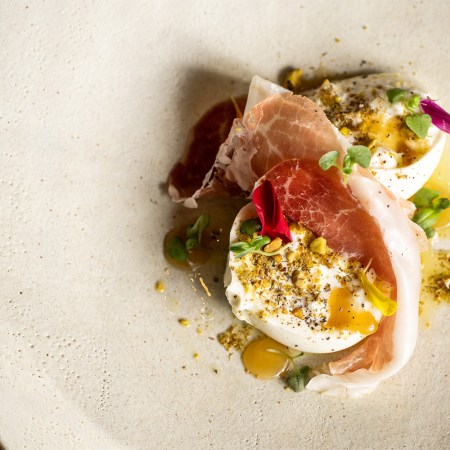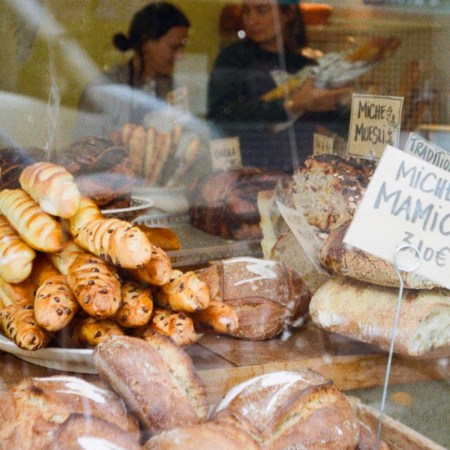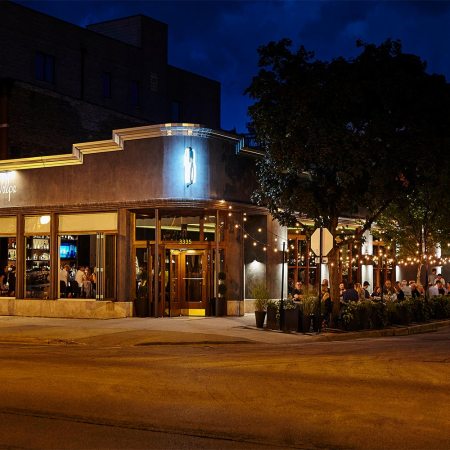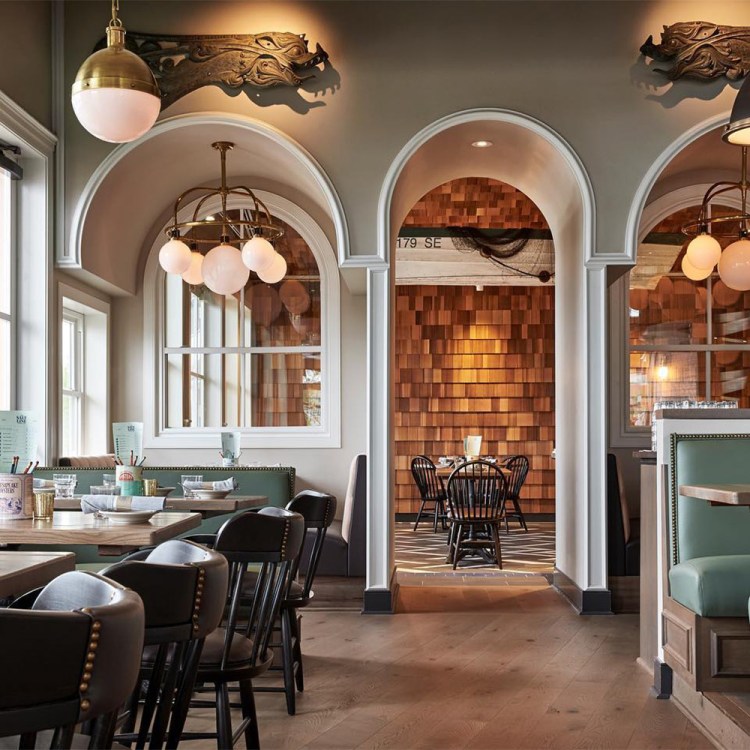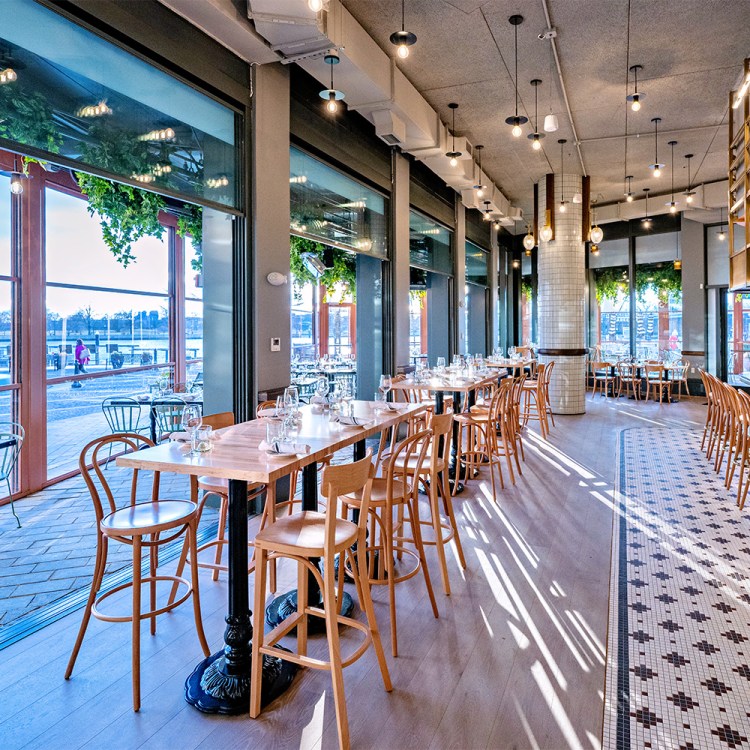Utter the term “fusion cuisine” in a room full of chefs and you’re likely to get at least a few groans. Ever since its inception, culinary purists have turned their nose up at the idea of fusion, or the gastronomical merging of two or more different cultures into one (hopefully) cohesive menu.
The first modern iterations of fusion cuisine date back to the 1980s, when inventive, well-intentioned chefs like Wolfgang Puck and Roy Yamaguchi wanted to infuse the flavors of multiple traditions into a single dish. At the time, there was no “name” for this practice. As Puck once said in an interview with the Wall Street Journal, “As soon as it’s named, it becomes a ‘trend’ that everyone can jump on and imitate, rather than innovate. It’s not as simple as adding ginger and soy sauce, and voilà, Asian fusion.”
In the 1990s, the satirical term “con-fusion” was coined, a tongue-in-cheek reference to chefs who were haphazardly throwing international flavors together with varying levels of success. Many restaurants seemed hooked on attempts at “Asian fusion,” birthing concepts like “Pan-asian,” “Pacific Rim” and “East-meets-West” well into the early 2000s, which nowadays reads both unappetizing and politically incorrect.
It wasn’t until 2004, a landmark year for New York City restaurants, that new players like David Chang arrived on the scene and changed everything. Chang’s groundbreaking Korean-American restaurant Momofuku marked the point when fusion cuisine really took a turn for the better. Momofuku, meaning “lucky peach” in Japanese, was a new kind of fusion cuisine: one that was later credited as “the rise of contemporary Asian-American cuisine” by the New York Times. There, traditional Asian flavors were given the justice they deserved, melded together with a newborn creativity and contemporary approaches that were distinctly American.
This new approach to fusion has slowly made its way into the mouths of Americans across the country, popping up from inventive food trucks slinging Korean tacos to more upscale joints such as DC’s Daikaya, where, at their upstairs Izakaya, you can find menu items like grilled avocado with fresh wasabi and housemade ponzu, or their cacio e pepe udon.
DC’s newest iterations on fusion have continued to evolve the tradition, most recently at the newly opened Cranes in Penn Quarter. A self-described “Spanish Kaiseki,” Cranes utilizes cooking techniques from both Spain and Japan in their menu of small plates.
Spanish tapas meets Japanese technique
“I’m a Spanish chef, and spent half of my career in Spain and the other in Singapore,” says executive chef Pepe Moncayo. “Cranes is a chef-driven restaurant and the cuisine is a reflection of who I am as a cook. In Singapore I had full access to Japan’s pantry, and that’s how I started using Japanese ingredients for Spanish cuisine. It led to the start of applying techniques and concepts from both cultures until the lines got diffused. I like to call it the thoughtful simplicity of Japanese with the emotional Mediterranean approach.”
Moncayo is well aware of the bad rap the term “fusion” receives, but he doesn’t let it scare him away from using it. “Fusion is a word that people want to stay away from. It has some bad press. But not me,” he says. When asked whether there are any advantages a fusion restaurant might enjoy, Moncayo actually says far from it, and that doing something truly new and unique is always a risk.

At Cranes you can either opt in for their hyper-seasonal, six-course omakase experience or order from an à la carte tapas menu. Dish examples include octopus with squid ink potato puree and sake-butter, or shishito peppers with sesame sauce, bonito flakes and kumquats.
“There are two types of fusion cuisine I’m familiar with — [the first being] traditional Italian cuisine. Sometime after 1492 someone started messing in the kitchen with fruits coming from the new world, tomatoes. That was a big change at the time and was definitely a break from the tradition of the time, but today are there any doubts that the tomato is a key ingredient in Italian cuisine?”
“Another is Catalan cuisine. Our national dish is a cannelloni pasta stuffed with meat (usually leftovers from yesterday’s stew), coated with bechamel and gratin with Parmesan cheese. It’s half-French, half-Italian, but there is an explanation to it. After the discovery of America, Catalonian ports were too far from the Atlantic and in a weak position to compete with the Atlantic-based ports of Spain, so they focused on Mediterranean sea commerce from Sicily and Corsica, and the natural result was fusion. Looking back I can see why the cuisines I cook with blended inside me, but I never had the intention of it happening. It is an organic process.”
Forget fusion: “global cuisine” is the future
Expanding on the typical two-cuisine mashup is Venezuelan Chef Enrique Limardo’s Immigrant Food, located just a stone’s throw from the White House, where they’re revolutionizing the fusion concept at a much more casual price point, fusing together cuisines as disparate as Ethiopian and El Salvadorian.
“Our fresh, creative dishes reflect how we see America at its core: diverse, nourishing and welcoming,” says Tea Ivanovic, their Director of Communications. “Chef Enrique Limardo’s inspirations are representations of America’s diverse gastronomic heritage, and our bowls are fusions and mixes.”
One dish combines Vietnam’s spicy-rice noodles with pickled bananas, an ode to both Central America’s favorite fruit and to German-style pickling. Another salutes Washington’s most diverse neighborhood and two of the city’s largest immigrant groups: the Columbia Road fuses Ethiopia’s berbere-spiced small lentils with vegetables that include loroco flowers from El Salvador.
Limardo says that Immigrant Food is like 20 restaurants in one. More than “fusing” two cuisines, as has been the dominant trend in the past, they focus on fusing multiple layers of spices and ingredients to create interesting and eclectic dishes. The chef’s culinary inspirations range from the beaches of his native country’s Margarita Island to the street foods of Caracas, but his cooking is distinctly global.
“The concept of ‘fusion cuisine’ isn’t new, but people today are increasingly curious and knowledgeable about the food they’re consuming,” says Ivanovic. “Consumers are more conscious of the impact that their eating habits have. What we buy and where we eat directly affects our communities, and thus, our society. Fusion, to us, is about more than combining flavors. Restaurants have always been the place where immigrants made a living, created community and showed off the cooking of their heritage. Today, more than ever, immigrants are the cultural fuel and the vitality of America’s food industry.”
This article was featured in the InsideHook DC newsletter. Sign up now for more from the Beltway.

